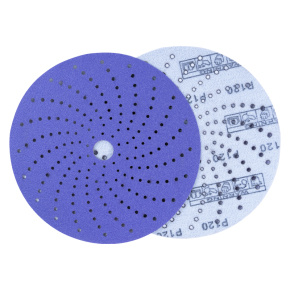The Essential Guide to Sanding Discs: Applications, Types, and Best Practices
Time:
2025-03-25 00:00
Source:
Sanding discs are indispensable tools in surface preparation and finishing across industries. Designed to attach to power tools like angle grinders or orbital sanders, these discs use abrasive grains to remove material, smooth surfaces, or refine finishes. Their versatility makes them critical in woodworking, metalworking, automotive repair, and construction. Selecting the right disc ensures efficiency, precision, and longevity of both the tool and workpiece.

Sanding discs are categorized by material, grit, and backing. Aluminum oxide discs are popular for general-purpose sanding on wood or metal, while ceramic abrasive discs excel in heavy-duty tasks due to their durability. Zirconia alumina discs strike a balance between aggressiveness and finish quality, ideal for metals. Backing materials like foam or fiberglass influence flexibility and heat resistance, critical for prolonged use.
2. How to Choose the Right Grit Size for Your Project
Grit size directly impacts surface outcomes. Coarse grits (40-80) rapidly strip paint or shape materials, medium grits (100-150) smooth rough surfaces, and fine grits (180-400+) create polished finishes. Matching grit to the task prevents over-sanding or inefficiency. For multi-stage projects, progressively finer grits ensure optimal results without damaging the workpiece.
3. Best Practices for Using Sanding Discs Safely and Efficiently
Always secure the disc properly to avoid detachment during operation. Apply consistent pressure to prevent uneven wear or surface gouging. Use dust extraction systems to maintain visibility and reduce health risks from airborne particles. Regularly inspect discs for wear or damage, as worn abrasives reduce performance and increase tool strain.
4. Maintenance Tips to Extend Sanding Disc Lifespan
Clean discs periodically using specialized rubber cleaning sticks to remove clogged debris. Store discs in a dry, cool environment to prevent adhesive degradation. Avoid excessive heat buildup by reducing pressure on the tool or using intermittent sanding cycles. Proper maintenance preserves abrasive grain sharpness and ensures consistent results.
Sanding discs are vital for achieving professional-grade finishes in diverse applications. By understanding types, grit selection, and maintenance, users can maximize productivity and tool longevity. Prioritizing safety and best practices ensures optimal outcomes, making these discs a cornerstone of effective material preparation and refinement.
Related News
undefined



